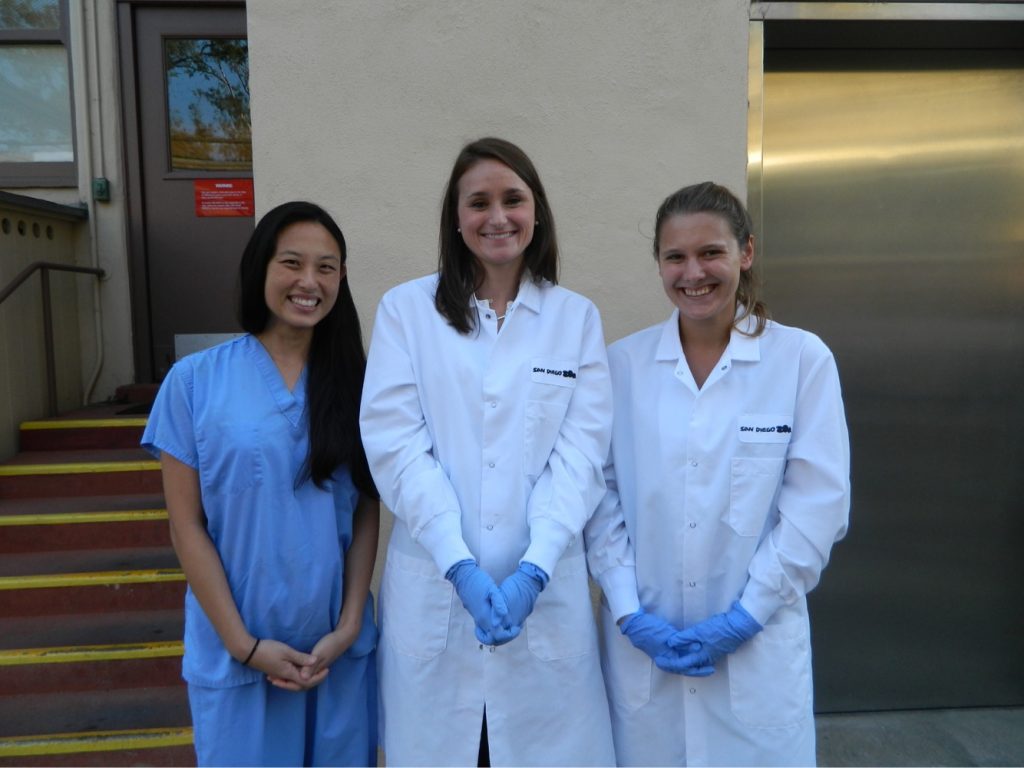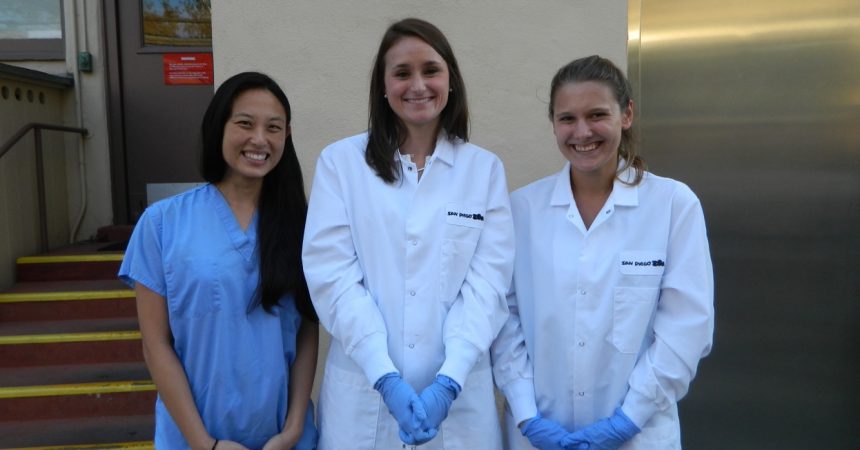Zoo Internquest is a seven-week career exploration program for San Diego County high school juniors and seniors. Students have the unique opportunity to meet professionals working for the San Diego Zoo, Safari Park, and Institute for Conservation Research, learn about their jobs, and then blog about their experience online. Follow their adventures here on the Zoo’s website!
 We all know what a veterinarian does; they care for and treat animals when they are unwell. However, on Wednesday, interns were given the opportunity to meet with Veterinary Pathology Resident Dr. Wesley Siniard, and learn how the role of the veterinarian can go far beyond the actual life of an animal and be an important one in the field of conservation. Veterinary Pathology is a specialty within Veterinary Medicine that diagnoses diseases through the examination of animal tissue and bodily fluids. The Zoological Pathologists play a critical role in maintaining the health of the animal collections at the Zoo by diagnosing and investigating different diseases.
We all know what a veterinarian does; they care for and treat animals when they are unwell. However, on Wednesday, interns were given the opportunity to meet with Veterinary Pathology Resident Dr. Wesley Siniard, and learn how the role of the veterinarian can go far beyond the actual life of an animal and be an important one in the field of conservation. Veterinary Pathology is a specialty within Veterinary Medicine that diagnoses diseases through the examination of animal tissue and bodily fluids. The Zoological Pathologists play a critical role in maintaining the health of the animal collections at the Zoo by diagnosing and investigating different diseases.
When an animal in the Zoo’s collection dies, it is sent to the pathology team for diagnosis. Here, the doctors combine information found from the animal’s clinical history, blood work, necropsy, histopathology, and culture results in order to come to a conclusion regarding why the animal may have died. Besides looking at their clinical history and blood work, the pathologist will perform a necropsy, which is essentially an autopsy for an animal. The same process applies to animals that are not a part of the Zoo’s collection, such as squirrels and rabbits. This is because whatever disease they died of could be a potential threat to the species housed at the Zoo. If the pathologists are unable to identify a disease upon initial examination, they will collect tissue samples to be sent to histopathology. Here, histopathologists will place the newly stained tissue on a slide. The pathologist can then view them under a microscope, which often leads to a more accurate diagnosis. After coming to a diagnosis, pathologists focus on researching the disease a little further. Once they know a little more about the specific disease or pathogen, they educate and collaborate with other members of the Zoo’s staff, such as the other veterinarians, nutritionists, and keepers in order to prevent the disease from appearing again.
You may be wondering, “How does this have anything to do with conservation?” Although it may not appear like it, the role these pathologists play is very significant in the Zoo’s conservation efforts. After diagnosing and researching a specific pathogen, pathologists work with keepers and vets to develop a plan for the species’ care. Their extensive knowledge allows species’ care to be taken to the next level, preventing disease from spreading and maintaining the health of the collection. By maintaining the health of the collection, animals can breed and continue to play an active role in their SSP (Species Survival Plan). In addition to working in veterinary hospitals, some pathologists participate in field work. One might go to Africa to research what diseases are affecting the wildlife there, and using their extensive knowledge about how and why the diseases are contracted, they can help devise plans to prevent them. For example, livestock roaming in Kenya can transmit disease to native species like the reticulated giraffe. By working to prevent their spread, pathologists are helping to eradicate a possible factor contributing to their decline, and therefore playing a key role in their conservation.
After visiting with Dr. Siniard, it became clear that diseases can easily thwart global conservation efforts. While the public may not be able to diagnose diseases, we can still aid in conservation efforts by helping prevent them. One thing you can do when visiting the Zoo is refrain from tossing food or foreign objects (such as coins) into the exhibit, as both can cause health related issues for the animals. For example, pennies cause deadly zinc toxicosis when ingested by birds and other small animals. Similarly, avoiding the use of chemicals and littering can all have a positive impact on the wildlife around you, as all contain toxins that impair healthy functioning of these animal’s bodies.
Despite Veterinary Pathology being talked about so little, the role these pathologists have at the San Diego Zoo is quite large. Not only are they an integral part of maintaining the health of the Zoo’s collection, but they are a key contributor to some of the Zoo’s conservation efforts, and it was a pleasure getting to learn this from Dr. Siniard.
Olivia, Conservation Team
Week Four, Fall Session 2018


